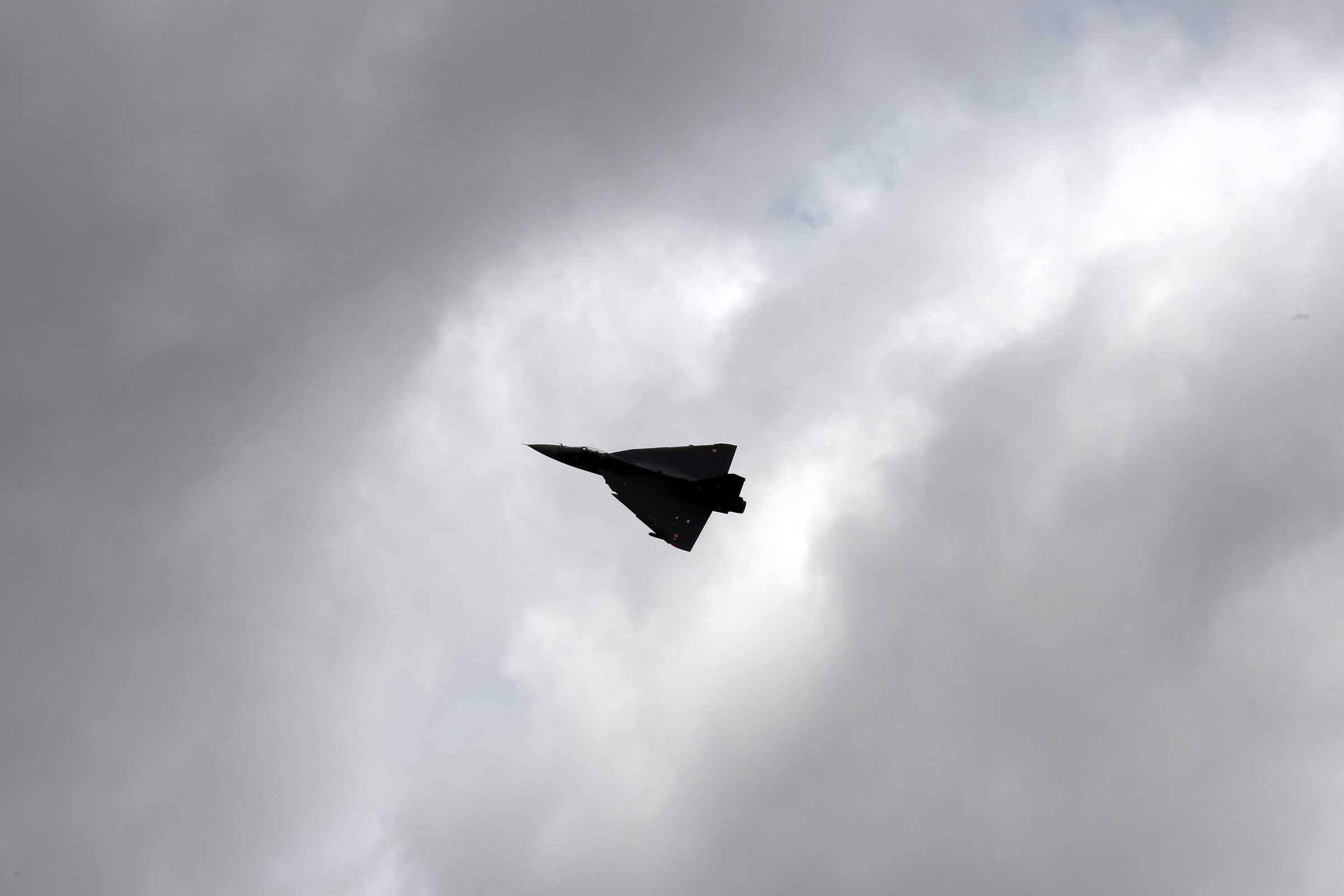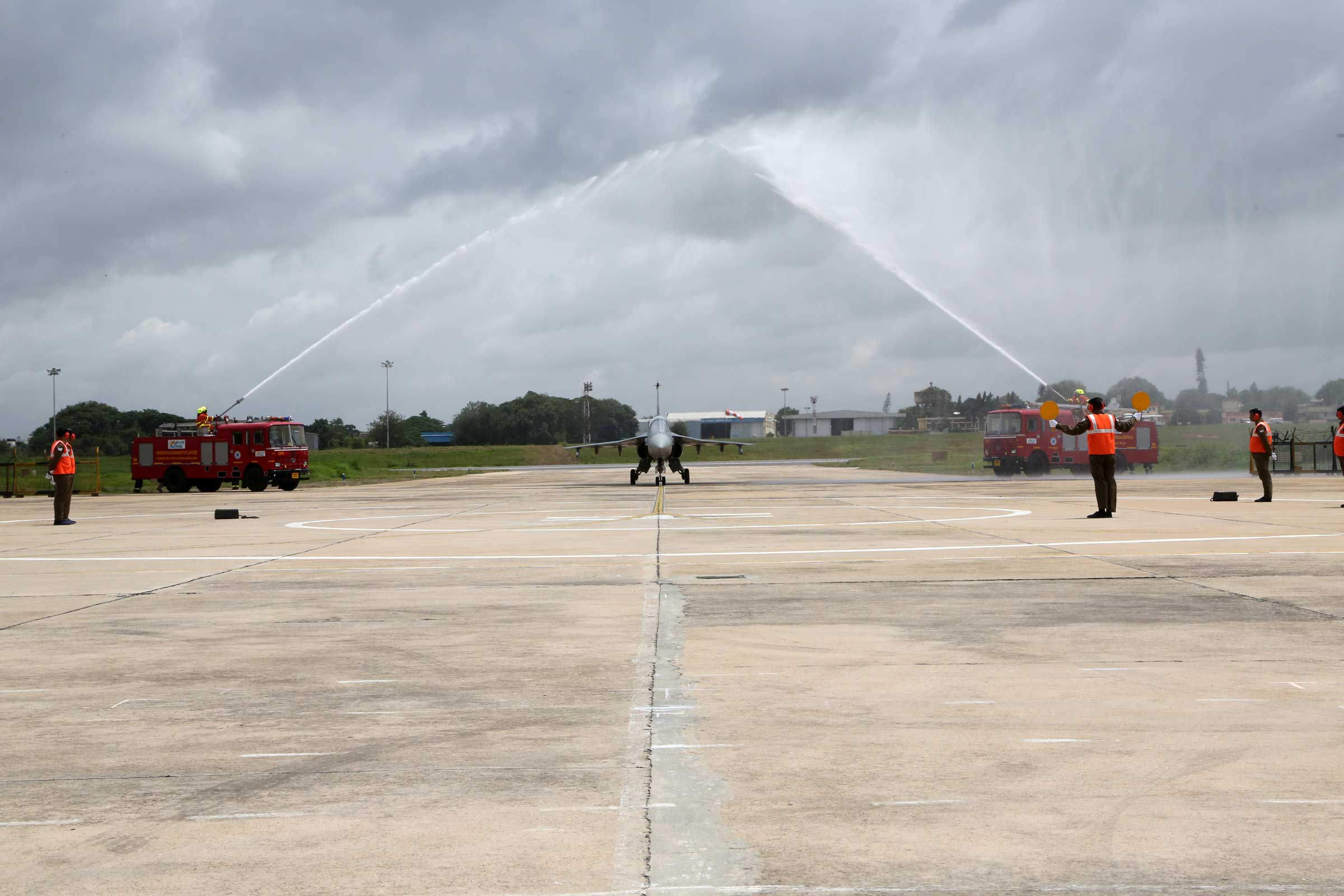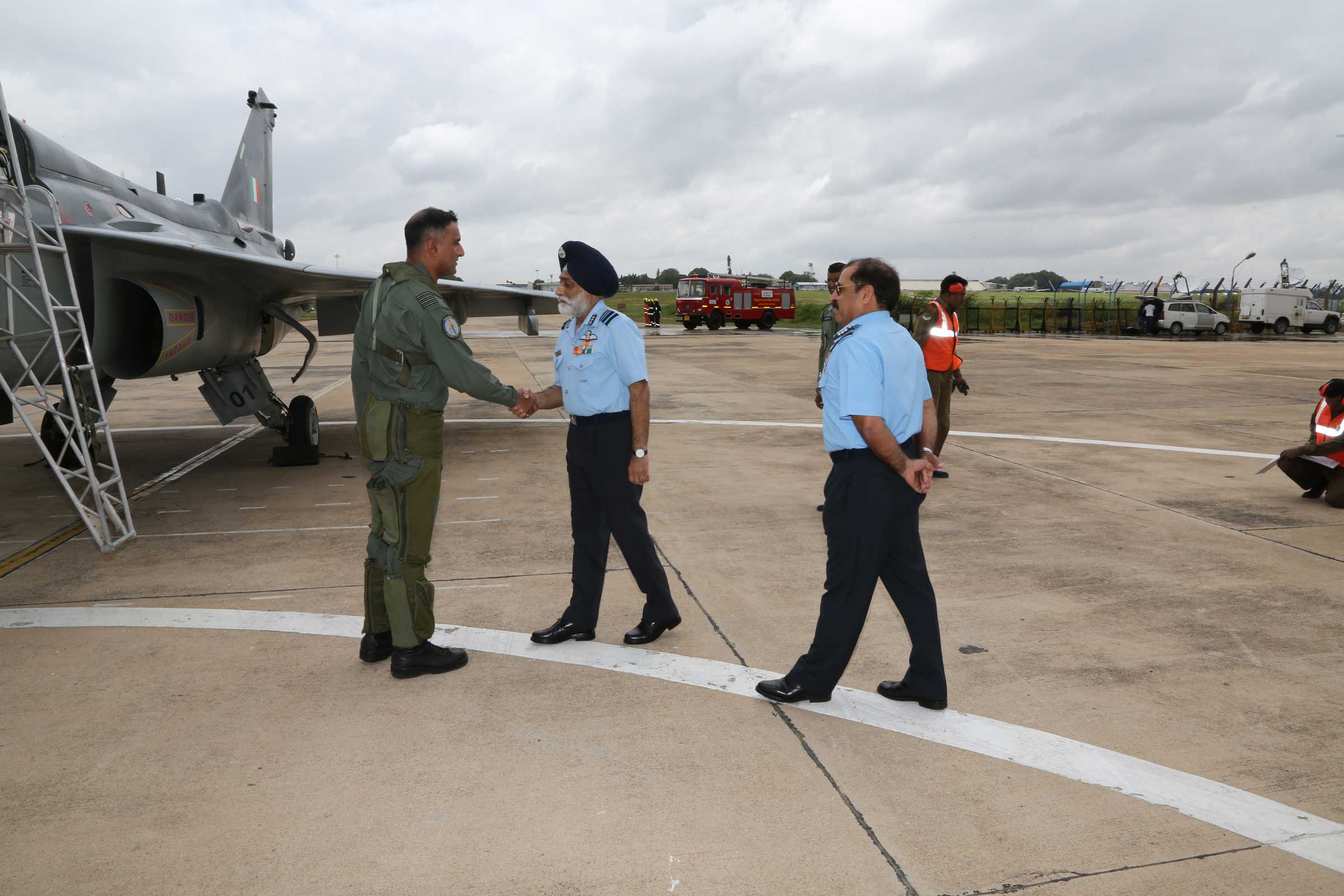Two LCAs were handed over to Squadron 45, also known as the Flying Daggers, by Air Marshal Jasbir Walia, Commander in Chief, Southern Command. Eighteen more aircraft will be handed over to the Squadron in the coming months.
The ceremony was held at the Aircraft Systems and Testing Establishment (ASTE) which has played a key role in the development of the aircraft by examining its vital components like radar and firing systems.

Flying Daggers were last equipped with MiG-21 aircraft and operated from Nalia, near Bikaner in Rajasthan. With the phasing out of its aircraft, the squadron was number-plated in 2002. Its motto is "Ajeet Nabha". The Squadron will operate from Bangalore for nearly two years before it moves to its designated location at Sulur near Coimbatore. It is the first fighter Squadron to be a part of the Southern Air Command of IAF headquartered at Thiruvananthapuram.
Group Captain Madhav Rangachari, an alumnus of the National Defence Academy, is the new Commanding Officer of Flying Daggers. He flew the inaugural flight of LCA in 45 Squadron during the induction ceremony. Apart from operational experience on Mirage-2000 and MiG-21 aircraft, he also has considerable experience on flight testing of LCA prototypes.
Tejas is the first advance Fly-by-wire (FBW) fighter aircraft designed, developed and manufactured in India. Conceived as a MiG-21 replacement, the aircraft has been designed and developed by Aeronautical Development Agency (ADA) and produced by Hindustan Aeronautics Limited (HAL). It is to the credit of its designers, manufacturer, technicians and test crew, that LCA has flown more than 3000 sorties/2000 Hrs till date without any accident. Tejas is a 4th Plus generation aircraft with a glass cockpit and is equipped with state-of-the-art Satellite aided Inertial Navigation System. It has a digital computer based attack system and an autopilot. It can fire air-to-air missiles, bombs as well as precision guided munitions (PGMs).

Induction of the aircraft is being planned in a phased manner. The IOC aircraft will be armed with ‘Close Combat Air-to-Air Missiles’ (CCMs), ‘Helmet Mounted Display’ (HMD) and ‘Precision Guided Munitions’ (PGMs) like ‘Laser Guided Bombs’ (LGBs). These aircraft are also capable of dropping unguided bombs with much higher accuracy due to highly advanced indigenous mission computer. The FOC aircraft would incorporate Beyond Visual Range (BVR) missiles, improved and better stand-off weapons and air-to-air refueling capability. The IAF had placed an order for 20 Tejas aircraft in the IOC configuration in 2006. This was followed by another order for 20 more aircraft in 2010 in FOC configuration. Since then the IAF has been pitching for LCA Mk 1A which would incorporate new generation Active Electronically Scanned Array (AESA) Radar with simultaneous air-to-air and air-to-ground capability, an integrated advanced Electronic Warfare Suite, advanced versions of air-to-air and air-to-ground weapons and maintainability improvements.
Dr S Christopher, Secretary, Department of Defence Research & Development and Director General DRDO said: “LCA Programme has been unique in bringing together stakeholders and partners within and outside the country. HAL has been the Principal Partner, with participation and support of IAF, IN, DRDO, CSIR, CEMILAC, DGAQA, PSUs, Academic Institutions, Private Establishments, etc.”

“Team ‘Tejas’ is proud that an idea in late 1980’s is today turning into a reality of having our own fighter aircraft,” he added.
Made-in-India jet fighter: Big step in weapons self-reliance
|